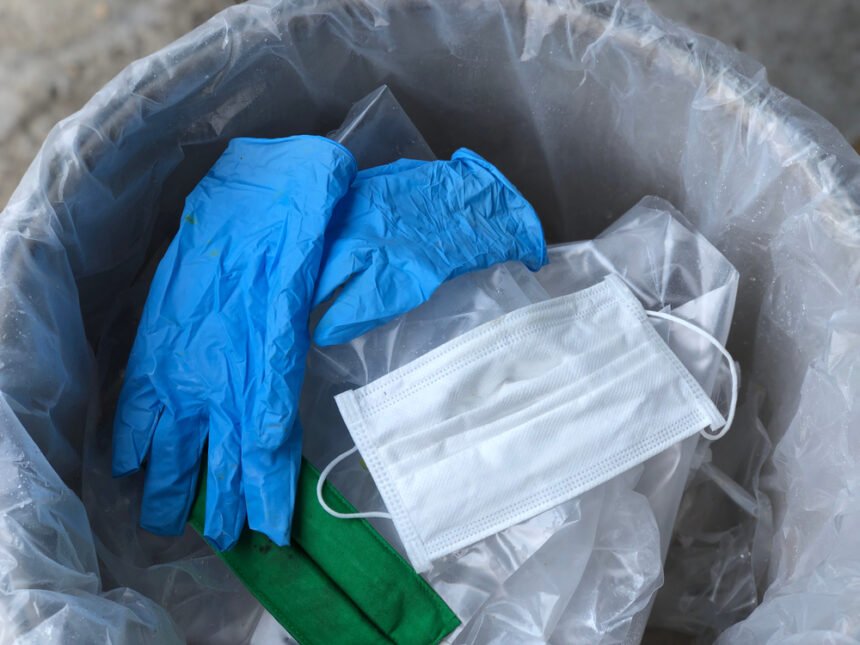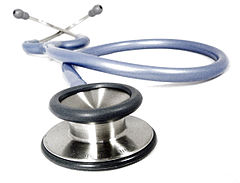Managing waste in medical facilities is a frequently overlooked topic for healthcare practitioners. In a high-pressure environment that makes life or death decisions, it’s understandable that how to deal with the fallouts of the processes comes as an afterthought.
However, hospitals generate a ton of waste every day. In the U.S alone, over 7000 tons of waste is produced daily in the healthcare industry. A single patient may generate up to 25 pounds. Leaving the waste lying around isn’t an option as they constitute a nuisance.
Some waste materials are toxic and can cause problems for patients and employees. Toxic materials also result in a complicated process for dealing with waste as they require special care when disposing.
Medical waste isn’t generated only in hospitals, though. There are six main types of facilities that produce medical waste:
- Hospitals and healthcare facilities
- Laboratories and medical research centers
- Mortuaries and autopsy centers
- Blood banks
- Nursing homes for the elderly
- Animal research and testing centers
When waste isn’t managed correctly in a facility, it can result in any of the following:
- Sharp-inflicted injuries due to contact with needles and other sharp objects. In the U.S. alone, over 300,000 sharp object-related injuries happen every year.
- Infections due to contact with contaminated items. Over 1.7 million hepatitis B infections globally happen every year due to the use of unsafe needles.
- Toxic exposure to unsafe pharmaceutical substances like antibiotics and cytotoxic drugs
- Release of chemical contaminants into the environment during the disposal of medical substances
- Air pollution in the form of particulate matter during incineration of medical waste
Types of Medical Waste
The type of medical waste produced in a facility depends on the procedures that are carried out there. The waste generated in a chemo facility will be significantly different from that generated in a pharmacy. It’s essential to understand the different kinds of medical waste before attempting to dispose of them. According to the WHO, there are eight (8) different types of waste and by-products produced in medical facilities. They are:
- Non-hazardous or general waste: This is the most common type of waste generated in medical centers and doesn’t pose any physical, biological, chemical, or radioactive threat to either patients or medical practitioners.
- Sharps waste: These include all waste objects that have been used to puncture or lacerate the skin. They include needles, syringes, disposable scalpels, and blades.
- Infectious waste: These are materials that have been contaminated with blood and other bodily fluids. They are also known as biohazardous or biomedical wastes. They may include used sharps, swabs, bandages, or stocks of infectious agents from a laboratory.
- Pathological waste: This kind of waste typically results from surgical procedures that require the removal of tissues or body parts. They can be from human or animal sources, including carcasses.
- Chemical waste: This includes all wastes that arise from chemical sources like solvents and reagents used in the laboratory. It also consists of all disinfectants, sterilizers, and metals found in medical devices.
- Pharmaceutical waste: Mainly involves wastes generated in a pharmacy, i.e., expired and contaminated drugs or vaccines.
- Cytotoxic waste: This includes all residues associated with all drugs that have mutagenic, teratogenic, or carcinogenic properties. This category of waste is particularly harmful because it contains waste that’s toxic to cells. It also includes materials and equipment that have been contaminated by those drugs.
- Radioactive waste: In medical settings, this kind of waste can be found in radiotherapy centers. They are formed as a result of contact with radionuclides.
How to Manage Waste in Medical Centers
As different facilities produce different types of medical waste, the exact method of disposal and management will vary. Most large facilities prefer to contract out their waste management to experts. For information on medical waste management, you can follow this link https://www.medprodisposal.com/.
However, even before handing over your medical waste to specialists, you can take steps to ensure safety and reduce costs. Here are nine tips every facility can implement:
- Have an organization-wide waste disposal policy: Having a written waste disposal plan that staff can read is necessary for every organization. A written plan will eliminate unnecessary confusion that arises as a result of having to separate waste. For instance, solid, unhazardous waste like a meal wrapper shouldn’t be deposited in the same place as a used syringe. An organization’s policy has to be specific and clear, detailing all the processes for managing regulated medical waste, or else, it may not serve its purpose.
- Provide constant employee training: Although a waste policy is essential, it can’t achieve much on its own. It’s necessary for organizations to invest time and energy into training their staff, whether new or current. Refresher courses should be organized periodically to gauge the knowledge of employees. It also helps to reiterate the reason behind your company’s policies to help the staff empathize with the waste management situation.
- Keep track of your state’s medical waste management regulations: Rules regarding the classification of waste may differ from state to state. What’s considered as regulated medical waste in one state may not be in the next. For instance, some states have limits on how long you can store your medical waste before disposing of them; others don’t. You can check your state’s policy here.
- Use color-coded containers to promote sorting of waste: The best time to sort waste is when it’s being disposed of. Sorting after disposal may result in contamination and wrong treatment. Color-coding your waste disposal containers make it easier for people to know what kind of waste goes where. You should also keep in mind that the nature of the waste material determines the type of disposal container that will be used. While plastic bags may suffice for most kinds of waste, radioactive waste should always be kept in a lead container.
- Use reusable products instead of single-use alternatives: About 33% of medical waste in the average healthcare facility is a plastic container. Most of these plastic containers are single-use and constitute a nuisance to the environment. Aside from the price you pay for buying them, you also have to pay for disposal. When possible, it’s important for facilities to go for safe and reusable containers instead. Some sharp containers and medical instruments can be disinfected and reused without any threat to the patients or medical staff.
- Use signage to indicate what goes where: Even after color-coding, some people, especially patients, won’t be able to tell what kind of waste goes into what container. Having visual reminders and cues around the waste disposal containers can help people understand your policies. Placing signs above the containers helps to minimize errors that can arise during disposal.
- Strategically position the waste bins to aid decision-making: Natural human behavior means that people are likely to drop waste in places that are most convenient for them. Facility managers must take note of that when positioning their waste collection containers. Smaller medical containers can be placed beside the patients’ beds to encourage both the staff and patients to dispose of biomedical waste there. Larger waste containers encourage people to use them as a regular trash bin for all items and should be put in public places. If possible, access to medical waste containers should be restricted to only the staff.
- Pay special attention to pharmaceuticals and chemotherapy drugs: Wastes in these categories can be particularly toxic. They typically require the services of a licensed medical waste transporter to dispose of and are required to be sorted in separate containers from other kinds of waste. They include empty IV bags, vials, gowns, gloves, tubings, or any other items that might have been contaminated with chemotherapy. Yellow-colored containers are used to hold them before disposal. It’s crucial to familiarize staff with the separation and disposal methods of radioactive materials, as mixing them can have dire consequences.
- Conduct routine waste audits: Having a system isn’t worth it if you’re not checking up on it periodically. Organize random spot checks on your medical waste disposal process to make sure that there’s compliance. If you find blind spots or practices that can be improved, share them with the employees, and organize retraining if you think it’s necessary. It goes without saying that if you find that compliance is at an excellent level, you should also appreciate your employees.
Conclusion
Proper waste management is vital for every healthcare facility from an environmental and financial point of view. When correctly implemented, a waste management process can significantly reduce the environmental footprint, waste disposal expenses, and supply chain costs of the facility. Healthcare facilities must ensure that they go beyond simple compliance with laws if they’re to engage with the best disposal practices. At the end of the day, the facilities, staff, and patients benefit the most from proper waste management.







